Well, might as well chime in on today's discussion of this article about the potential abandonment of Taiwan to the PRC.
I'll stick mostly to where I disagree with specific military assessments which underpin some of the article's policy recommendations. foreignaffairs.com/articles/asia/…
I'll stick mostly to where I disagree with specific military assessments which underpin some of the article's policy recommendations. foreignaffairs.com/articles/asia/…
Let's start with some assumptions in assessing the military balance.
Since the core of the article is giving up on the idea of defending Taiwan, IMO assessments of the PRC threat to other allies should be based on the military situation post-incorporation of Taiwan by the PRC.
Since the core of the article is giving up on the idea of defending Taiwan, IMO assessments of the PRC threat to other allies should be based on the military situation post-incorporation of Taiwan by the PRC.
This matters a great deal: Dr. Glaser assesses that the defense of Japan should be straightforward. But while this is true *now* it would become much less so in the case of PRC control of Taiwan.
For example, in terms of specifics he first states that invasion of Japan would be difficult to accomplish across "several hundred miles" of water, missing the fact that giving up Taiwan means that such a large gap would largely no longer exist.
With Taiwan no longer blocking the way, but instead becoming a point of embarkation, it would be a jump of only ~140 nautical miles from the ports at Hualien and Keeling to the substantial port facilities and airfield at Ishigaki, Okinawa. 


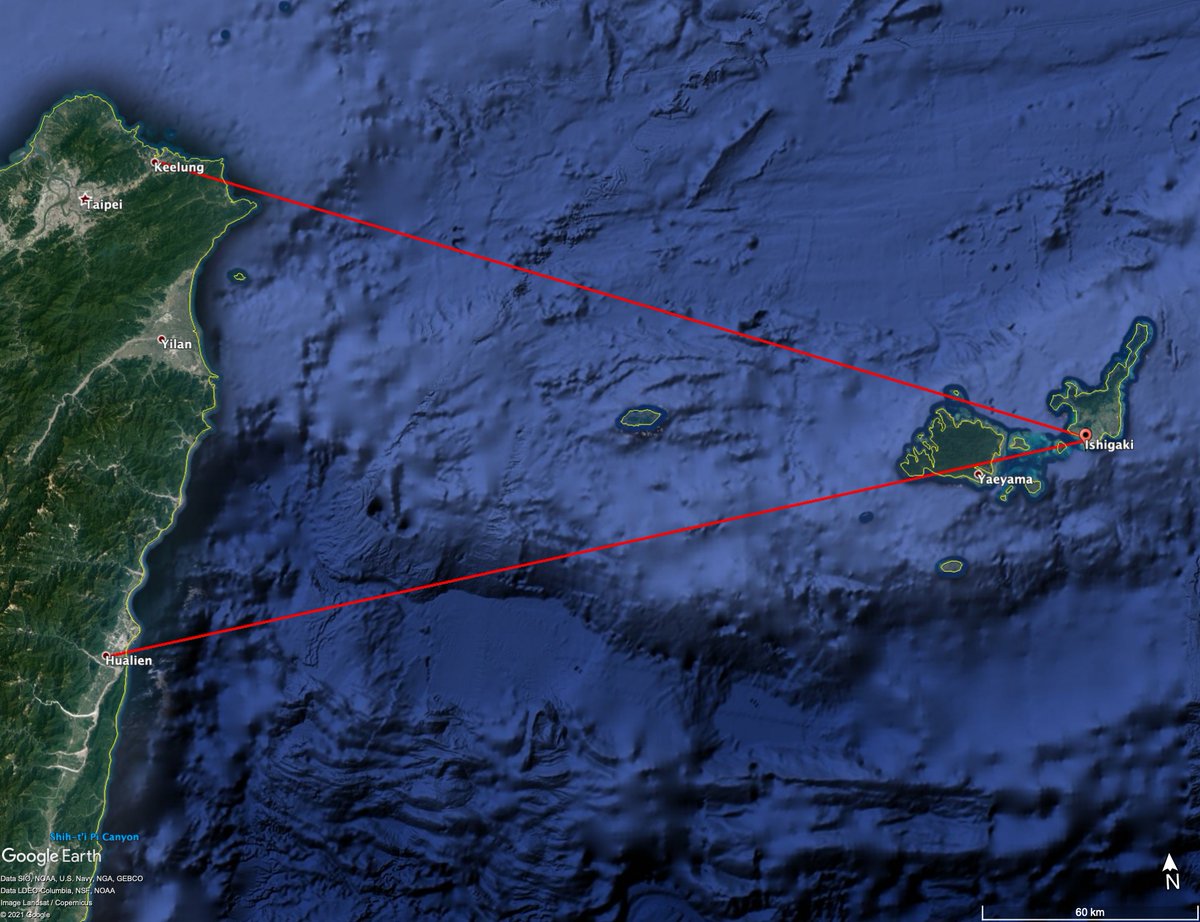


From there, it's only about 70 NM to Miyakojima, and thence about 150 NM from there to the main island of Okinawa, with its many port facilities and airfields. 
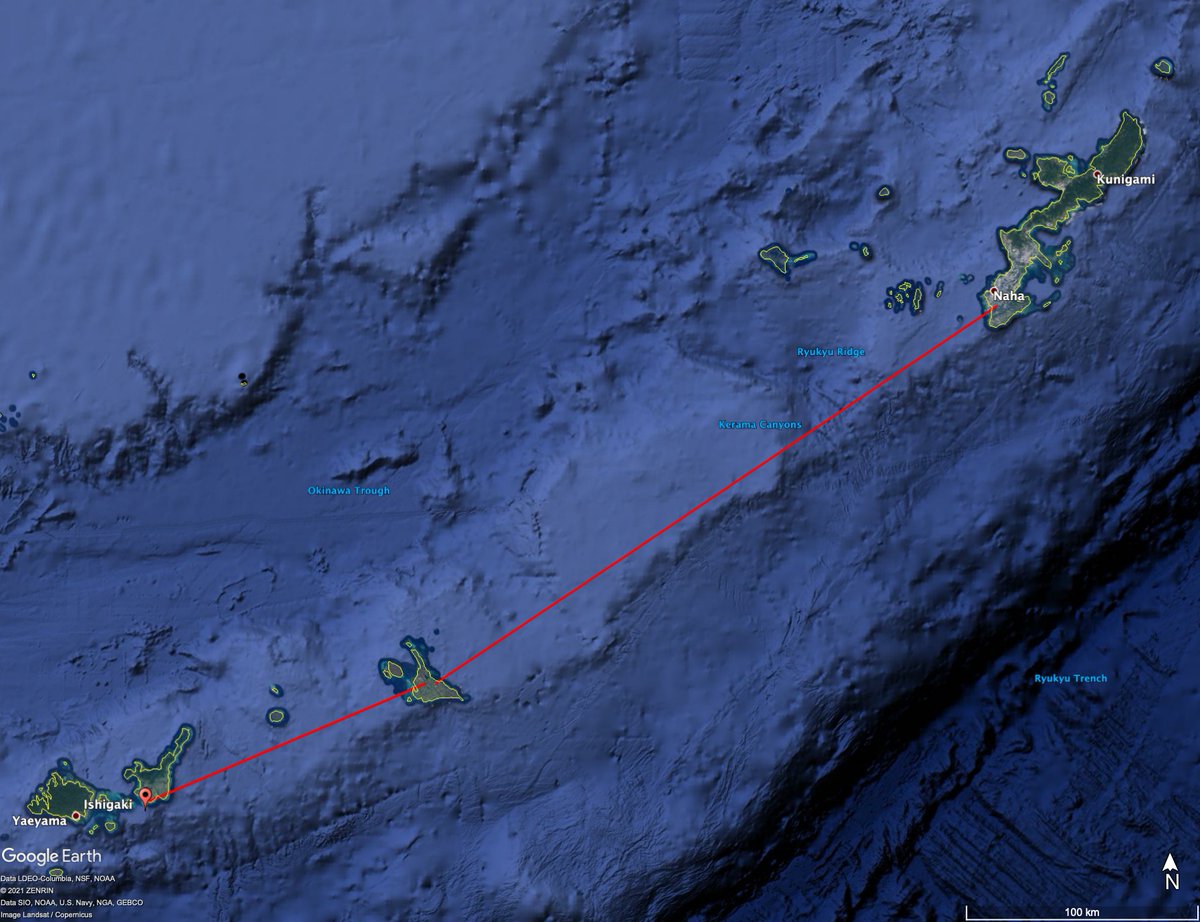
I'm confident Dr. Glaser is well aware of the island-hopping campaigns of WWII, & that the U.S. planned to use Okinawa as a springboard for the invasion of the rest of Japan. I'm somewhat surprised he'd not recognize that giving TWN to the PRC could enable something similar. 
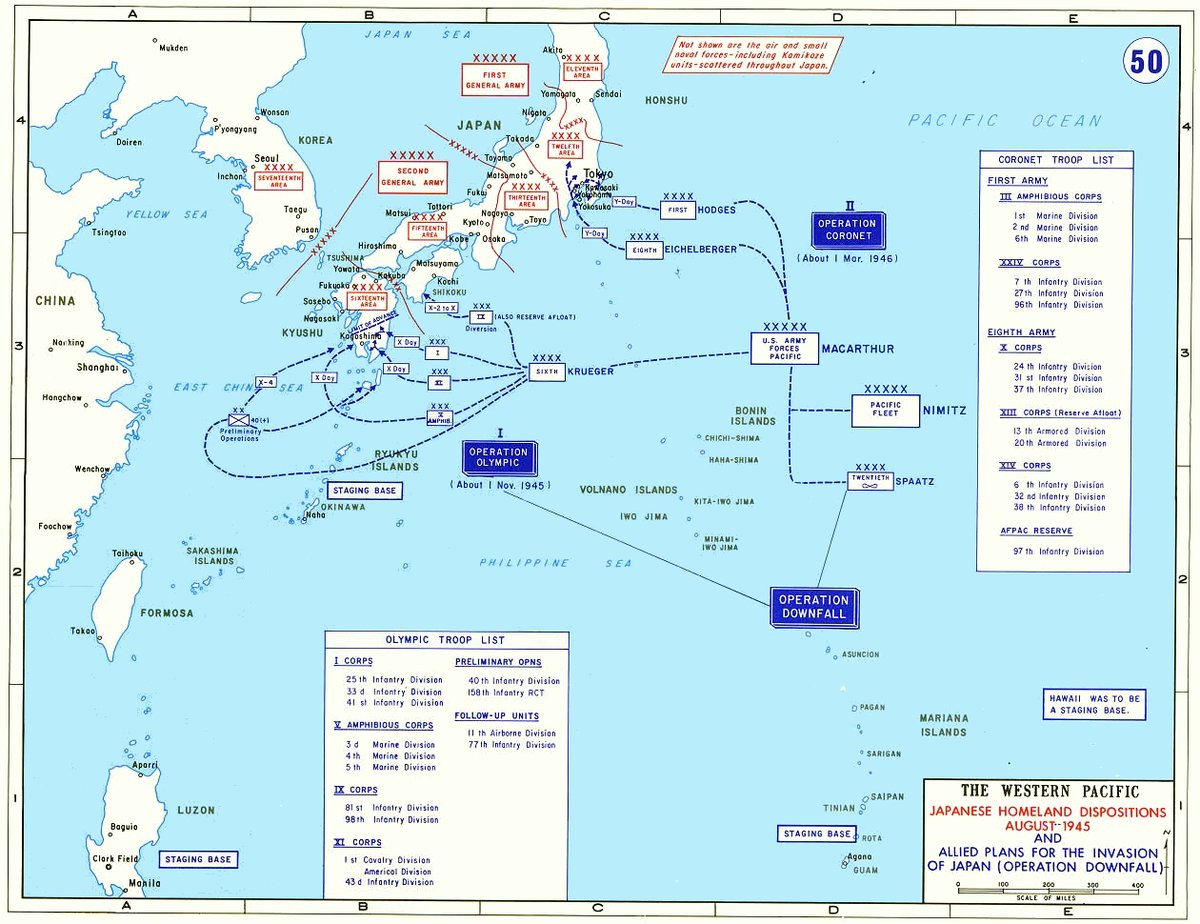
In fact, for some time during WWII U.S. forces conducted detailed planning to use then-Formosa/now-Taiwan as the primary staging base *for the invasion of the Ryukyus and thence Japan* and only gave up on that plan after much wrangling, in favor of going through Luzon. 

Dr. Glaser also assesses that, even if Japan could not be invaded, China would have difficulty coercing Japan via blockade. Again, with Taiwan—and potentially eventually Okinawa—in Chinese hands, I lack his confidence this would still be the case. 
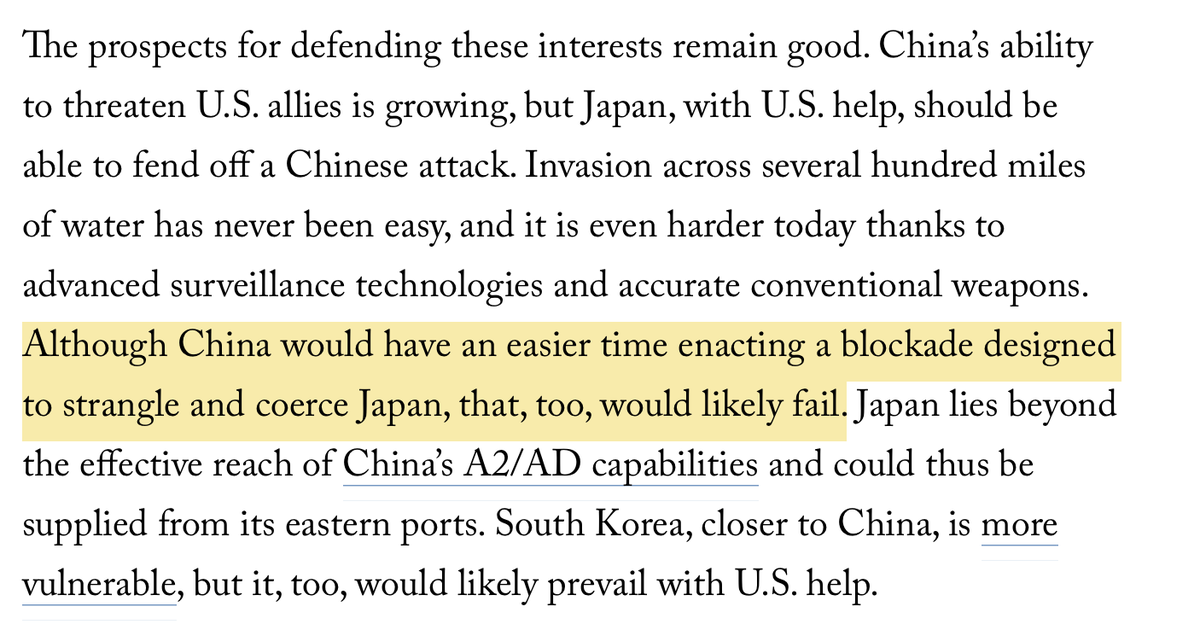
With the PLA Navy gaining direct access to the Philippine Sea from ports & airfields in Taiwan (instead of having to transit the First Island Chain), Chinese forces could venture forth to interdict Japan's most vital sea lanes, directly along the approaches to Japan's ports. 

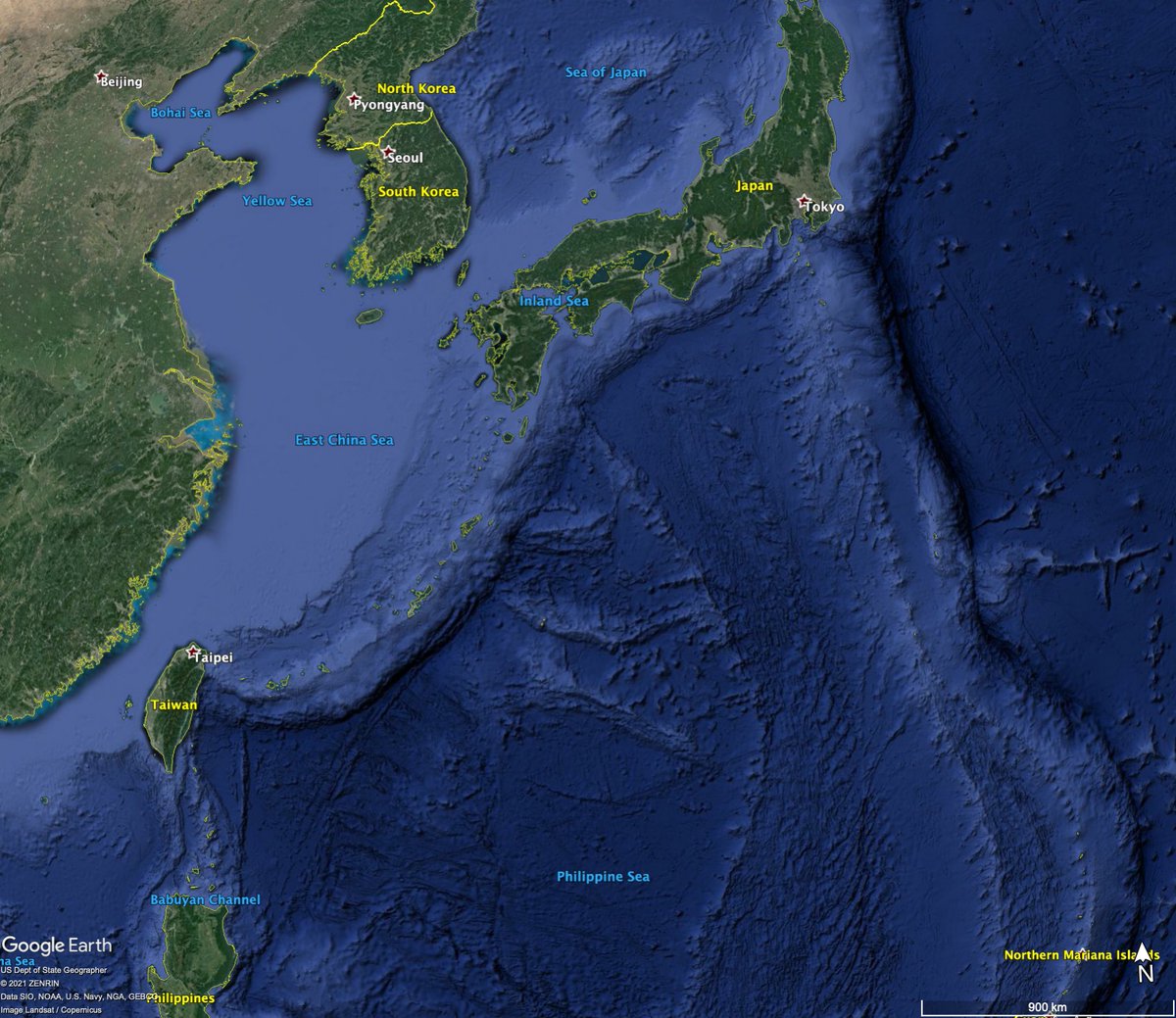

Dr. Glaser asserts, however, that "Japan lies beyond the effective reach of China’s A2/AD capabilities and could thus be supplied from its eastern ports." 
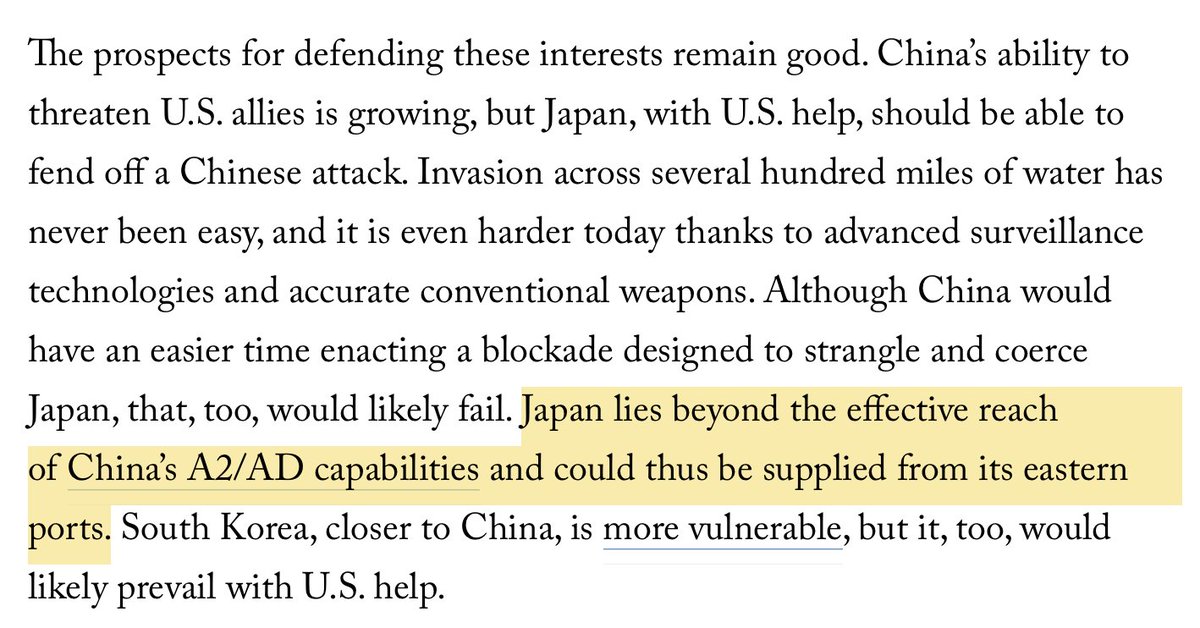
My initial reaction, shared by other observers, was one of bafflement. Any analyst with a passing familiarity with China's current capabilities knows that Japan lies well within the range of China's counter-intervention systems, such as the DF-26 IRBM and H-6K bomber. 

The key term that Dr. Glaser used was "effective reach", and a hyperlink does indeed link to a 2016 article which posits a theory that, over the long-term, A2/AD systems will be largely effective only within 400-600km from controlled landmasses. belfercenter.org/publication/fu…
The article in question is one well-known to many analysts, and was quite controversial when it was published. IMO it is mis-applied here. Those familiar with the article will recall it is highly theoretical in nature, and explicitly applies to a long-term, two-sided competition.
While Dr. Glaser applies the present-tense to his assessment, the article explicitly posits a 2040 time-frame, with an assumption of pursuit by both sides of the competition to the limits of technology, including use of anti-satellite weapons at unprecendented scale. 

I'd note also that the article he references indicates an invasion of Taiwan by China could be made "prohibitively costly" by application of Taiwanese A2/AD, though Dr. Glaser chooses in his own article to characterize Taiwan as "more vulnerable to Chinese conventional forces". 

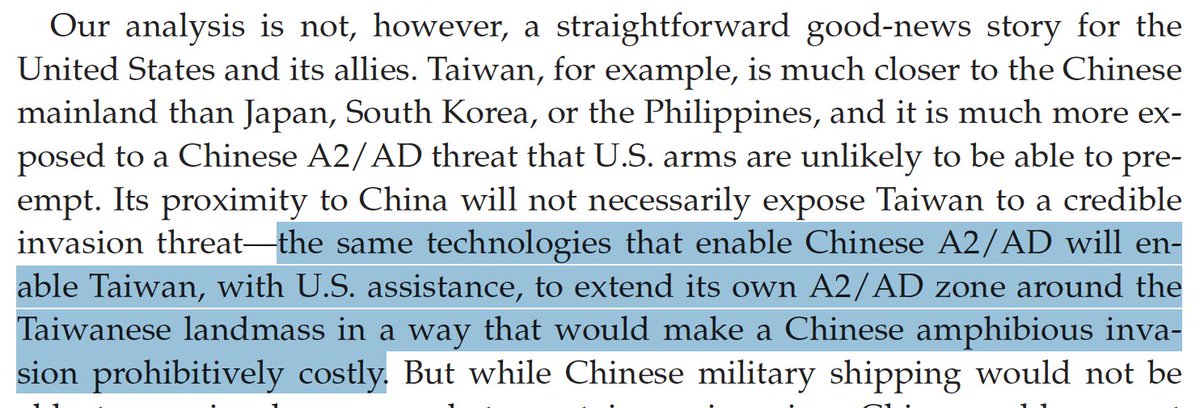

In his assessment of the gains to China's submarines by possession of Taiwan, he points mostly to the advantages that China would gain for its nuclear-armed submarines (SSBNs). 


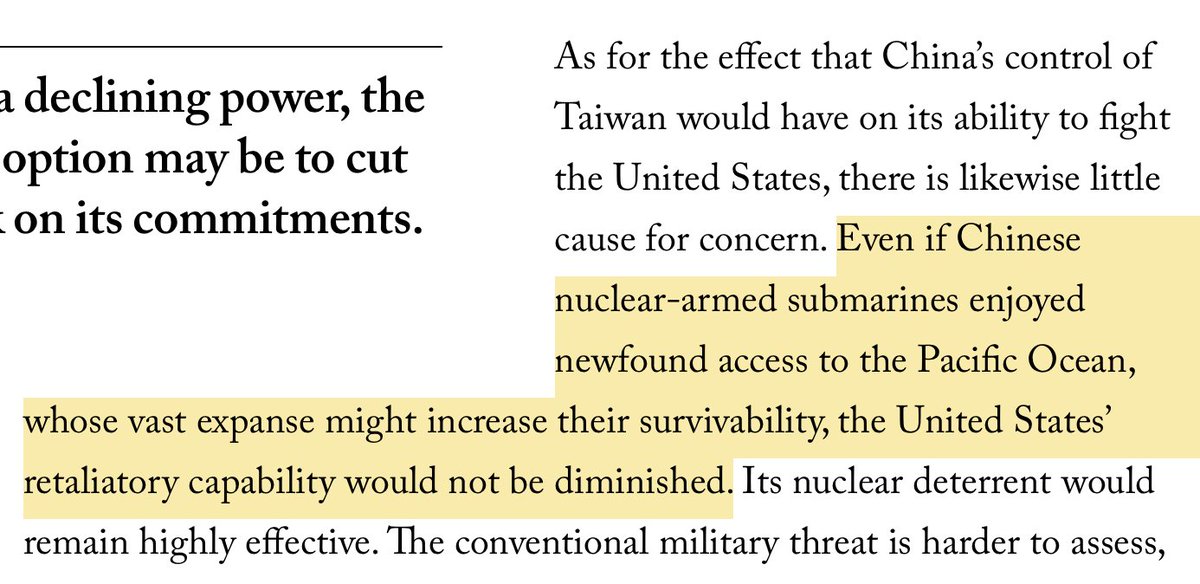
This is IMO not the area of resulting undersea advantage to best focus on, as I think it's much more likely for China to pursue a SSBN bastion in the SCS regardless of whether they hold Taiwan.
https://twitter.com/tshugart3/status/1054142155390967809
After all, as discussed in the DoD's 2020 China Military Power report, when China fields its longer-ranged JL-3 SLBM, open ocean Pacific patrols (with the vulnerability that that would bring to China's noisy submarines) probably won't be necessary to target the U.S. 

Regarding the additional threat from conventionally-armed submarines, he assesses that US ASW assets could "reduce the ability of Chinese submarines to leave Taiwan". 

One presumes he is referring here to wartime—the only time US ASW forces could really *prevent* PLAN submarines from proceeding to sea. If that's the case, this misses the fact that there is deep water immediately offshore from eastern Taiwan, unlike China's current sub bases... 
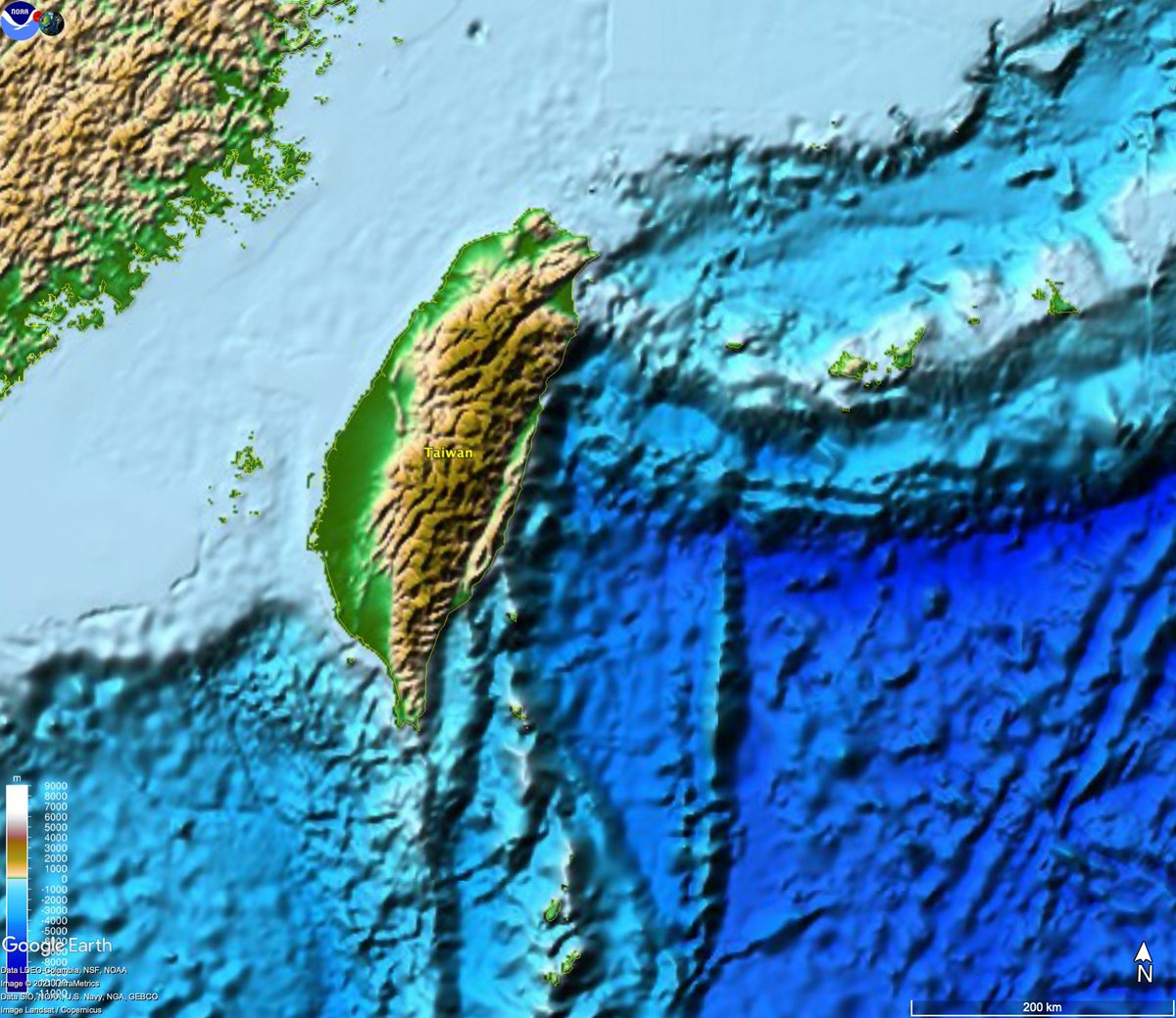
...and that, of the ASW platforms he mentions, only the attack submarines (not ASW aircraft or auxiliary ocean surveillance ship) are likely to be survivable anywhere near a PRC-controlled Taiwan. 



In his discussion of the SCS, I agree that in a conflict allied shipping could bypass it—reaching Japan and S Korea via other routes. He also recognizes, as the Chinese surely do, that their trade routes must of necessity pass through the SCS & also cross the Indian Ocean. 
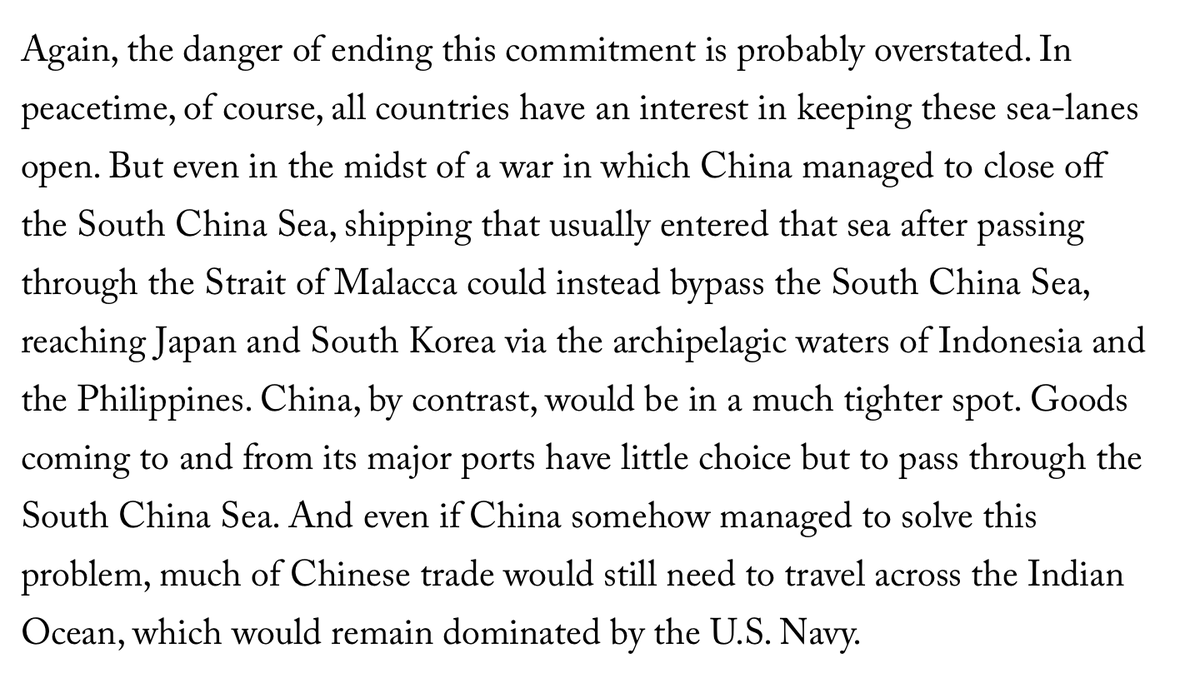
Here he comes tantalizingly IMO close to touching a couple of ideas. First, probably the biggest reason for China's island building in the SCS: to indeed "solve this problem" by gaining sea control and the capability to secure its SCS SLOCS in a conflict—of whatever type.
And 2nd: the need for Chinese trade to travel across an Indian Ocean dominated—for now—by the U.S. Navy.
Defending those SLOCS—worldwide—is likely the true reason the massive naval expansion China is now undertaking. Would you like to know more? See here: cnas.org/publications/c…
Defending those SLOCS—worldwide—is likely the true reason the massive naval expansion China is now undertaking. Would you like to know more? See here: cnas.org/publications/c…
As for the fate of the 23+ million free people of Taiwan, abandoned to the tyranny of the most powerful authoritarian state in the world, at least they would know that we made clear to China that their imprisonment "would violate international norms."
Fin.
Fin.

• • •
Missing some Tweet in this thread? You can try to
force a refresh



















